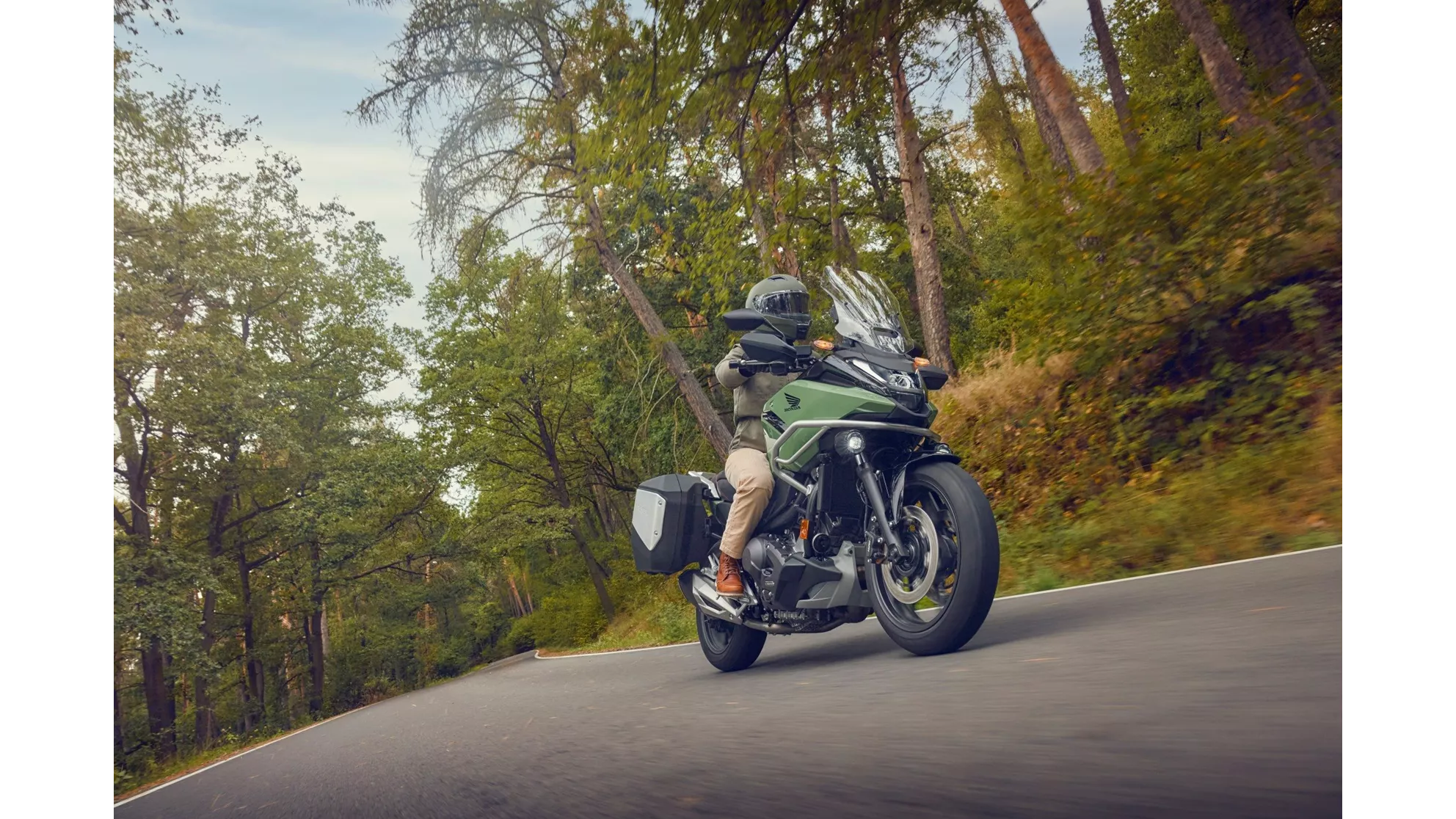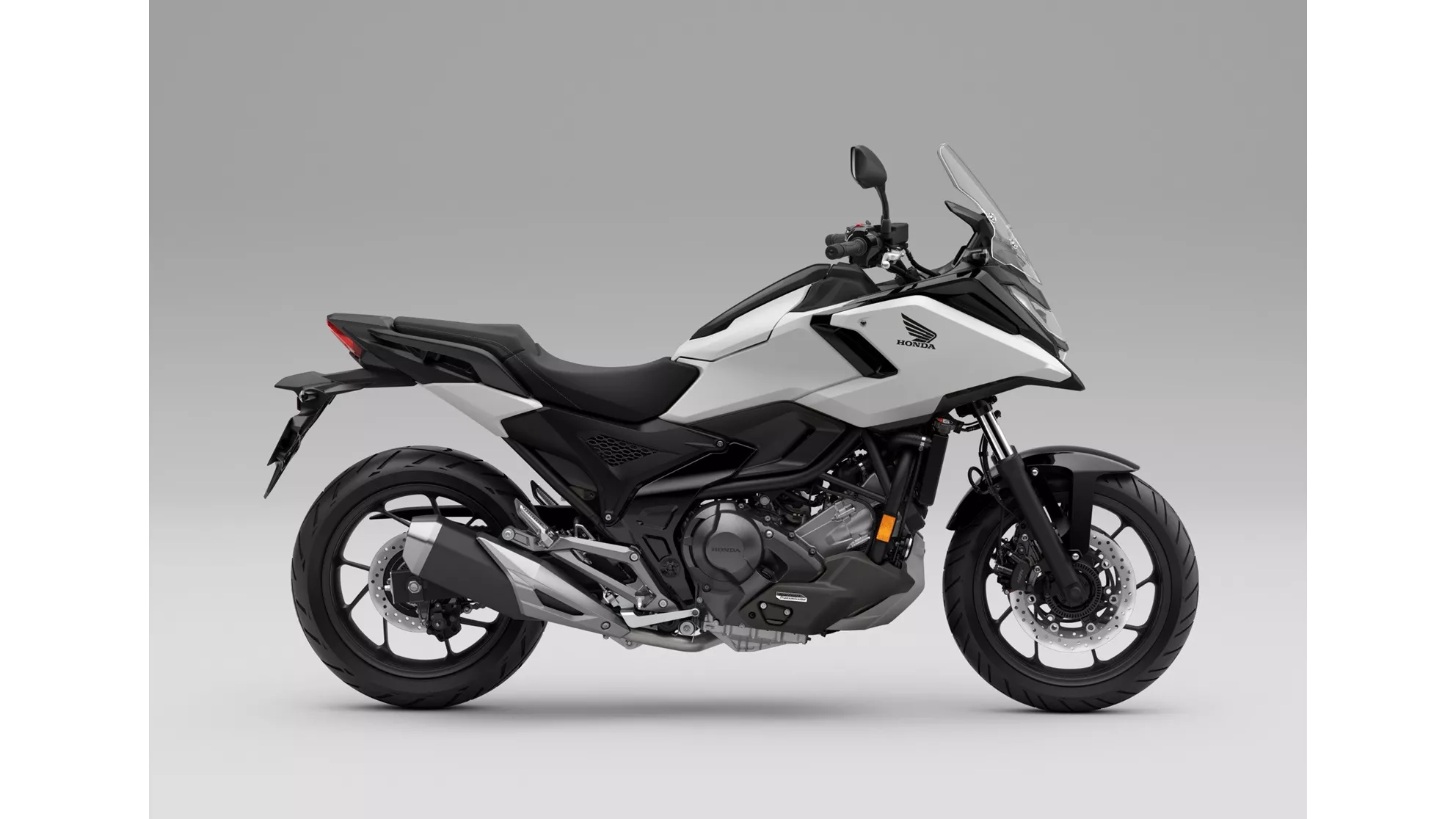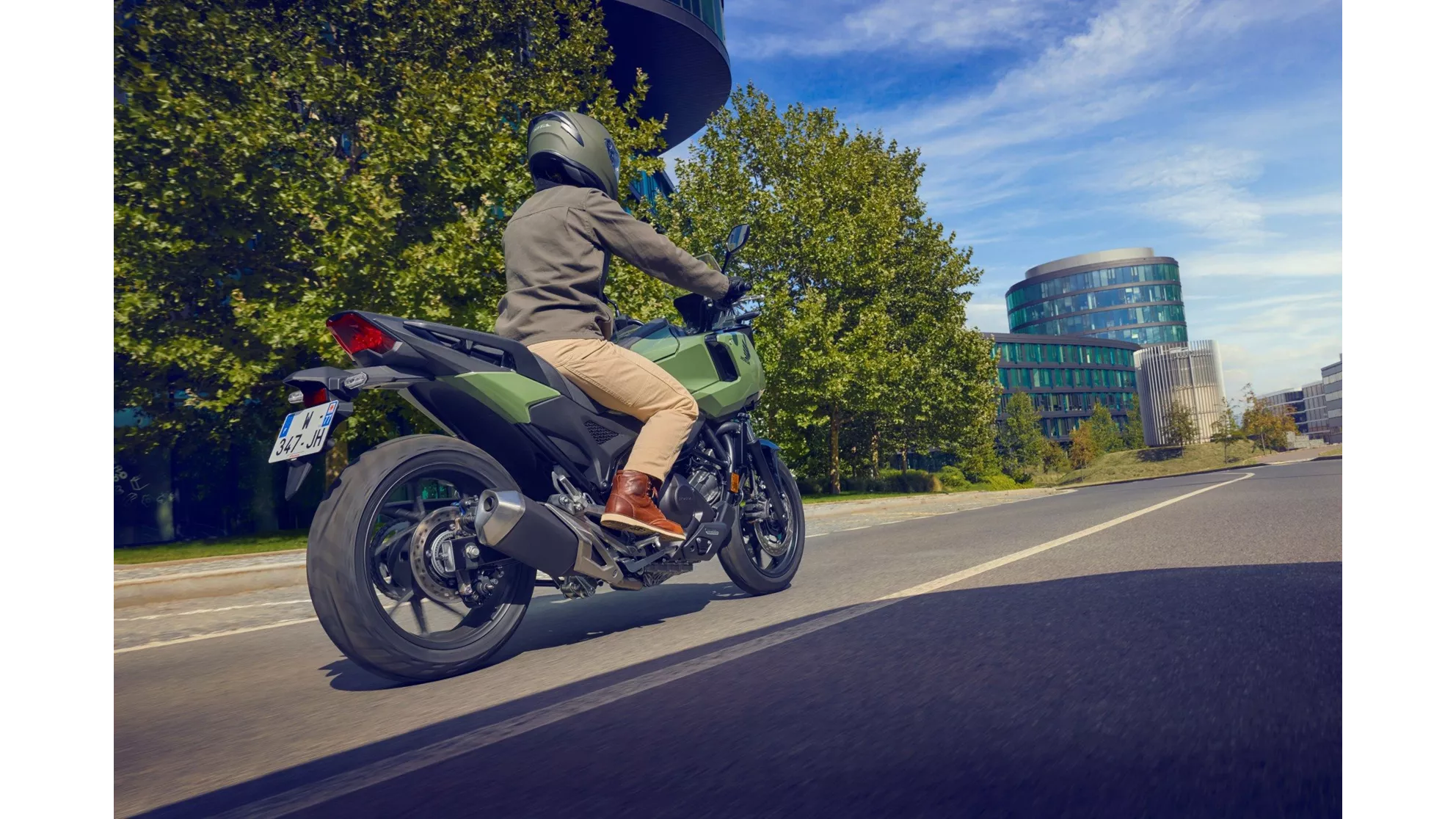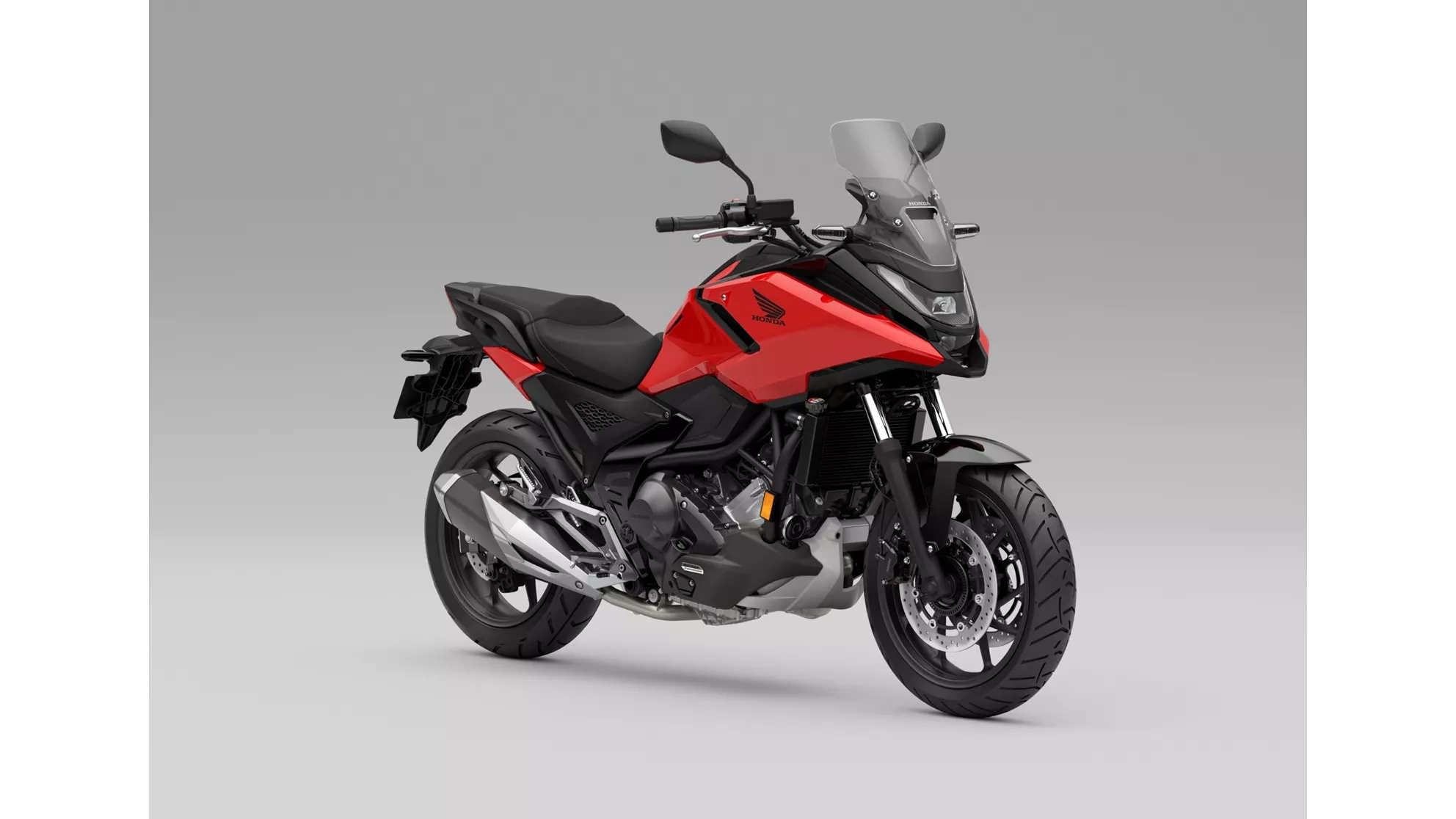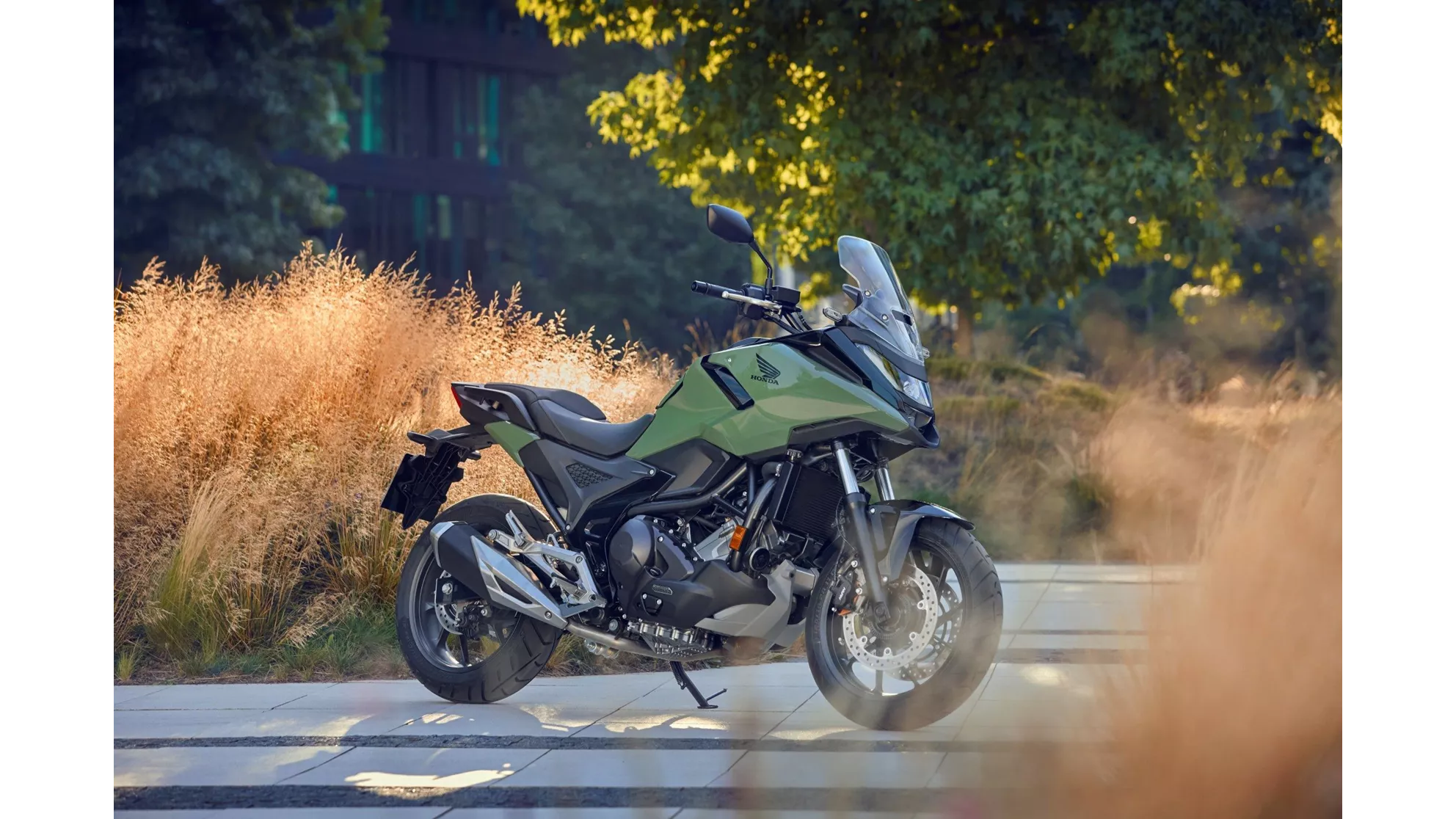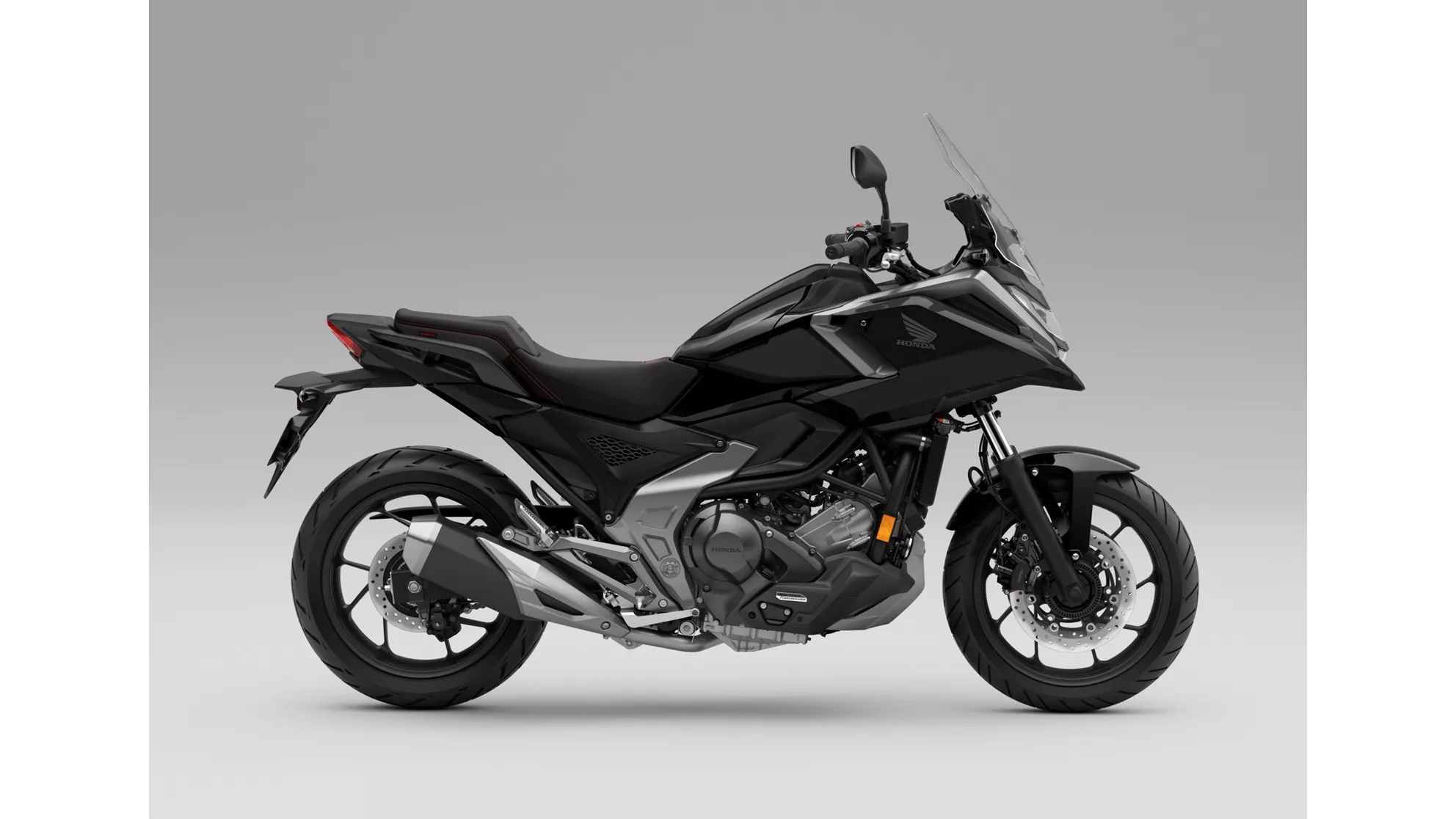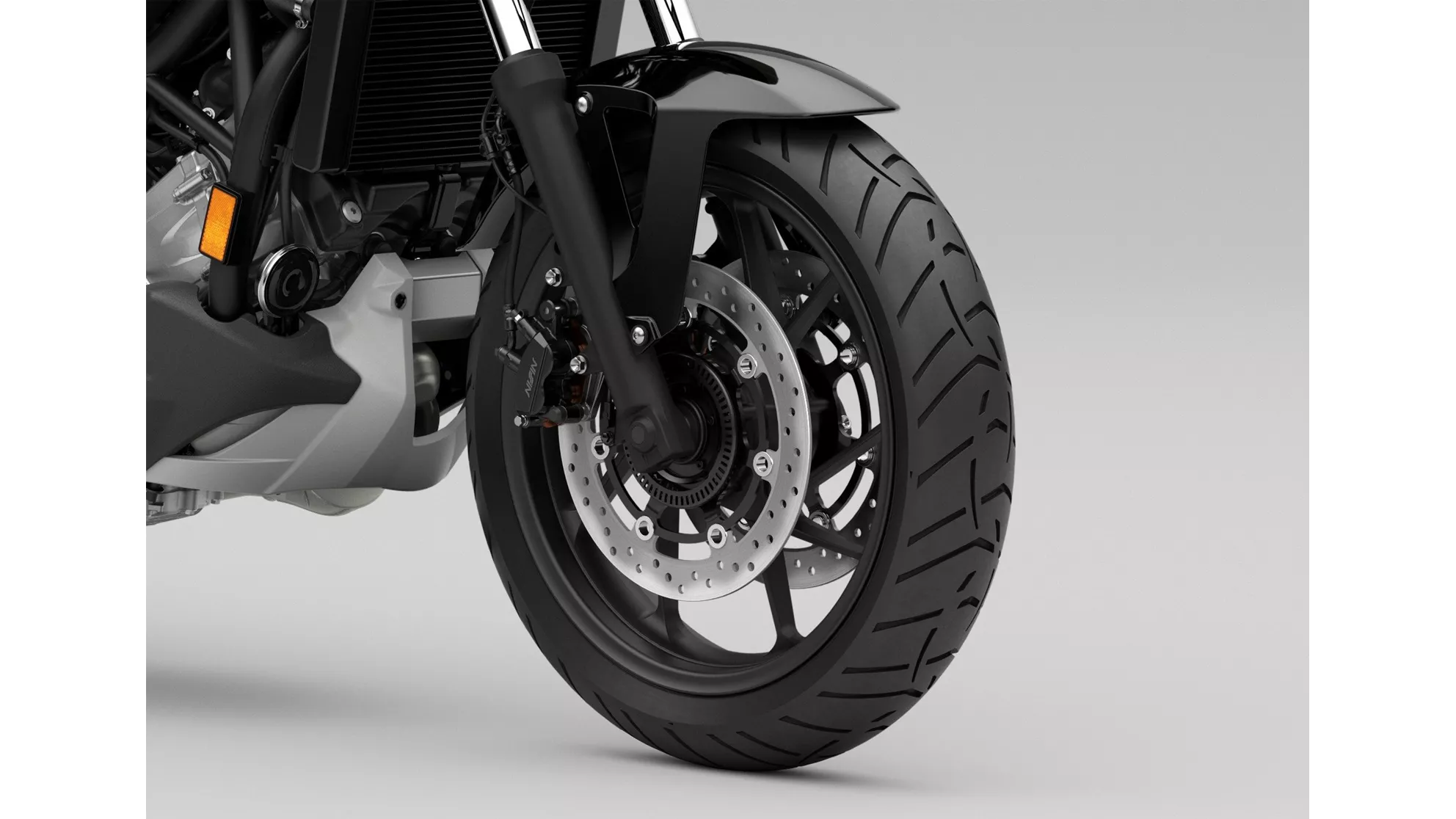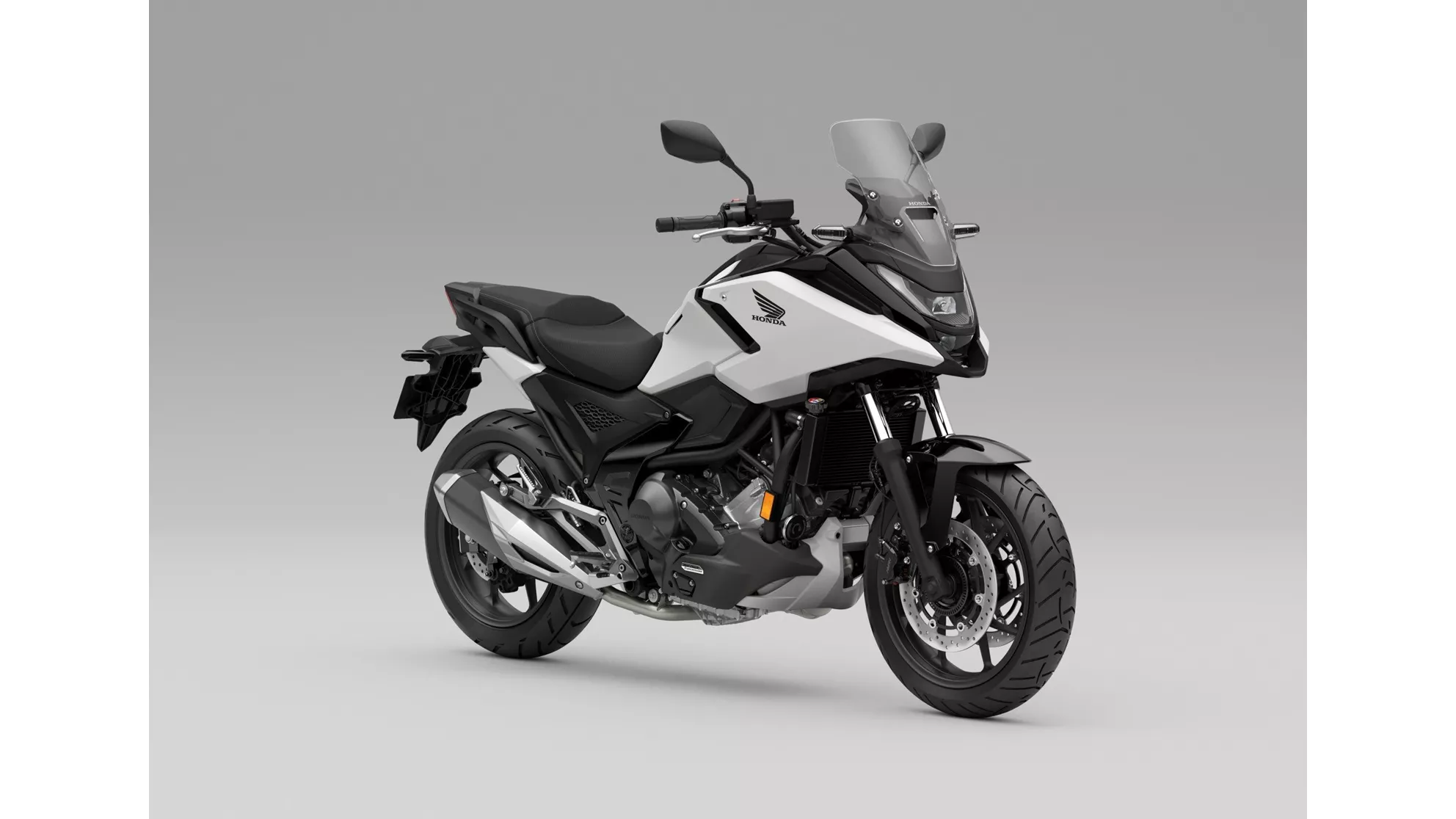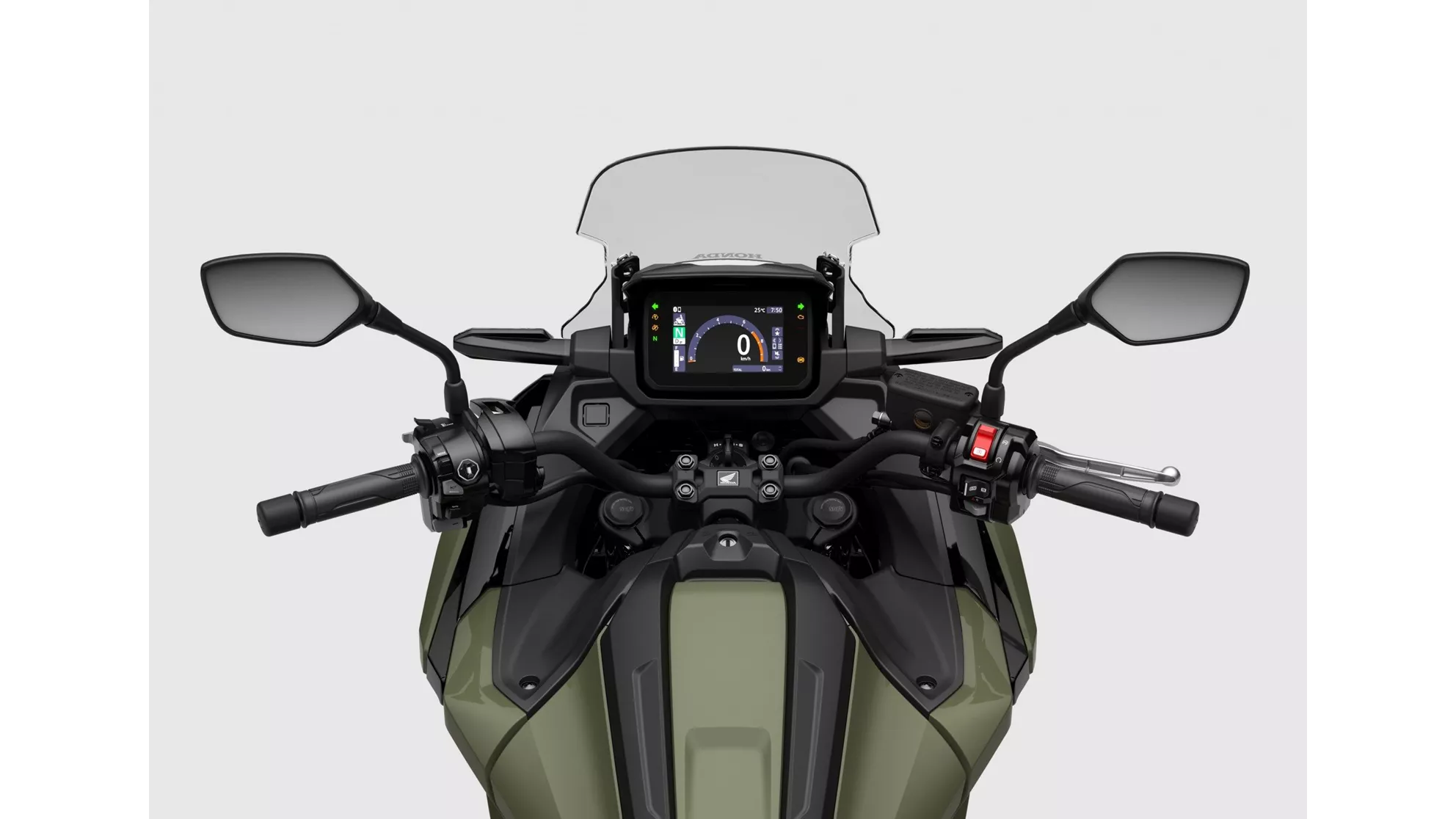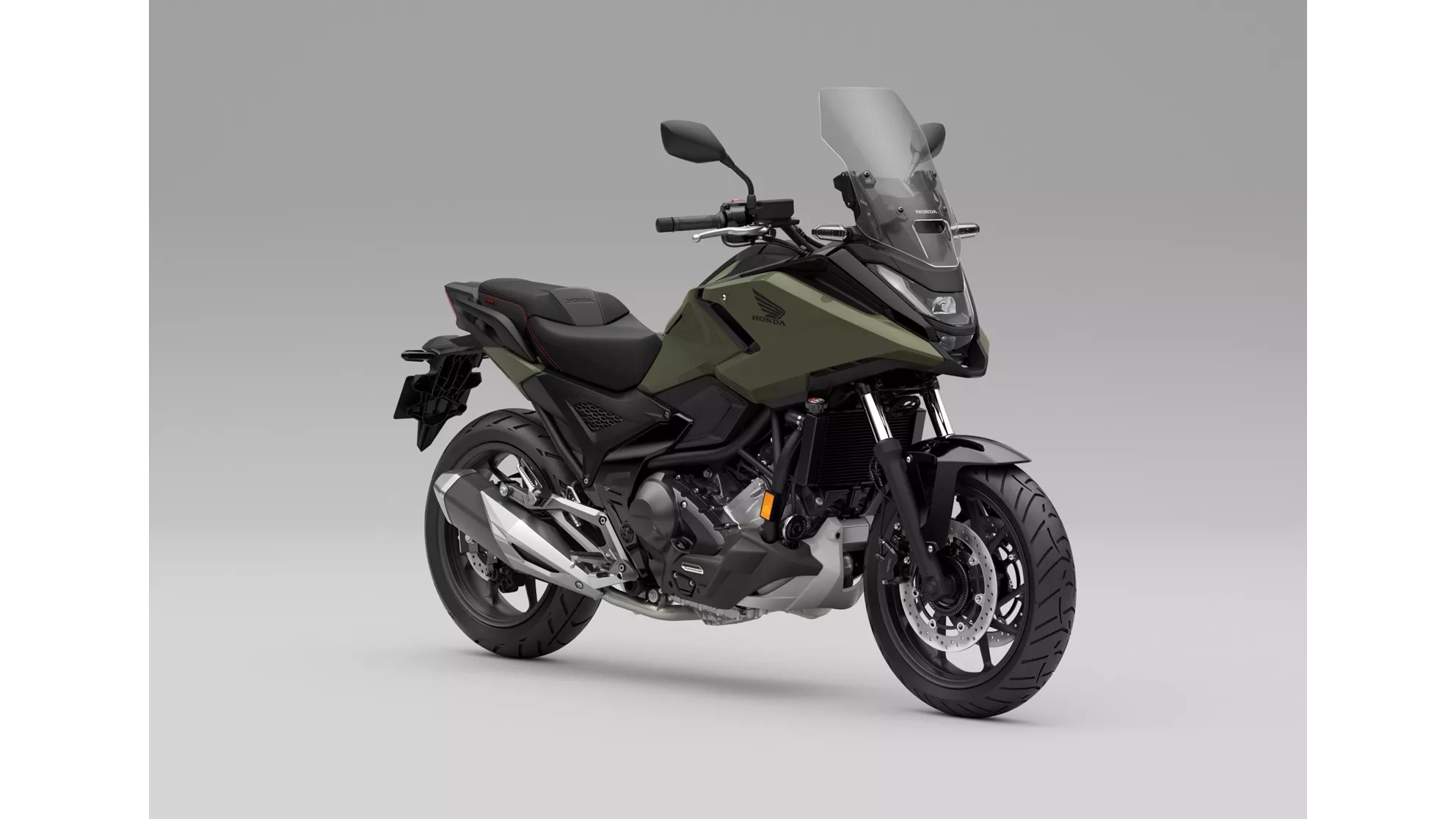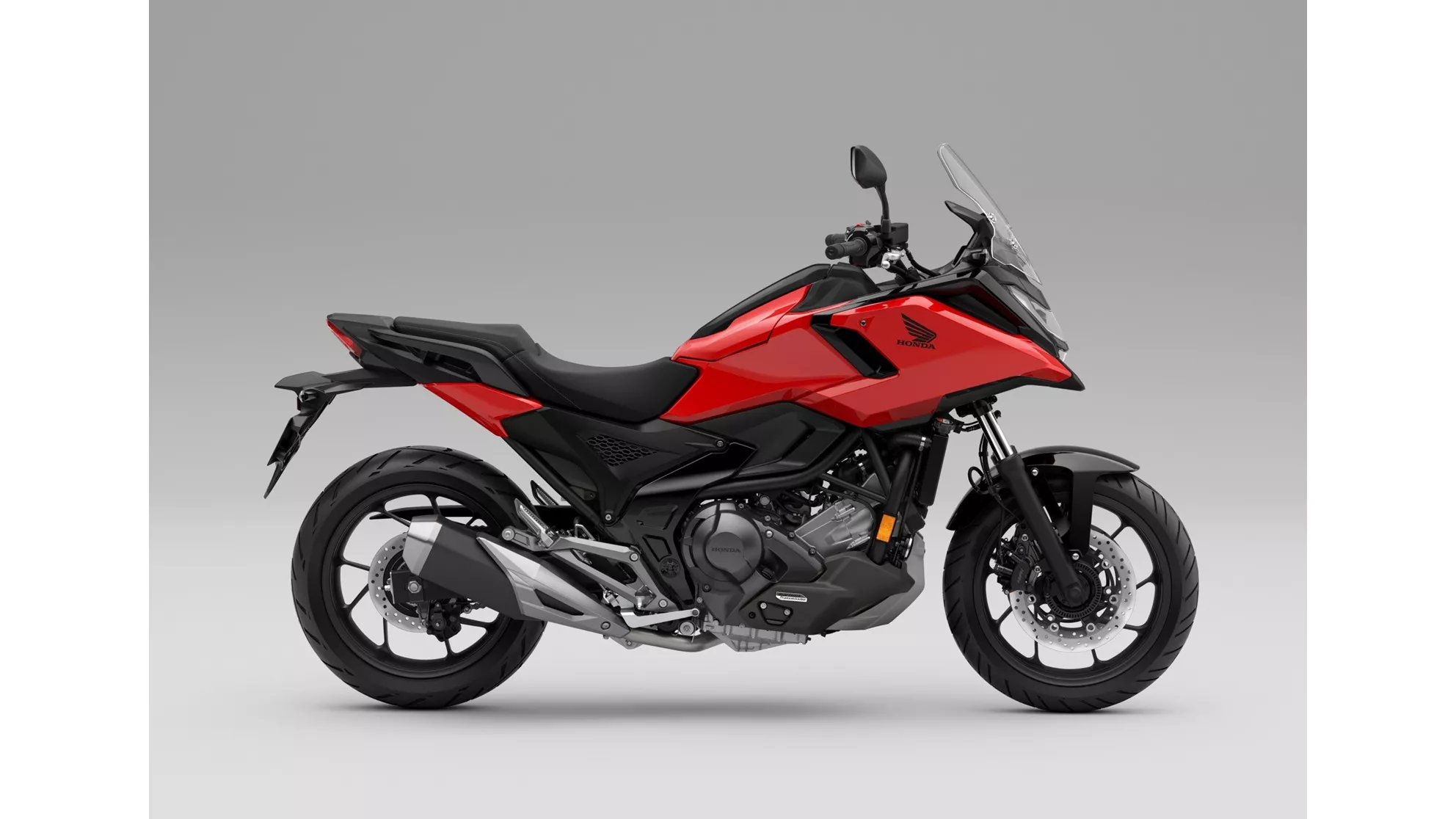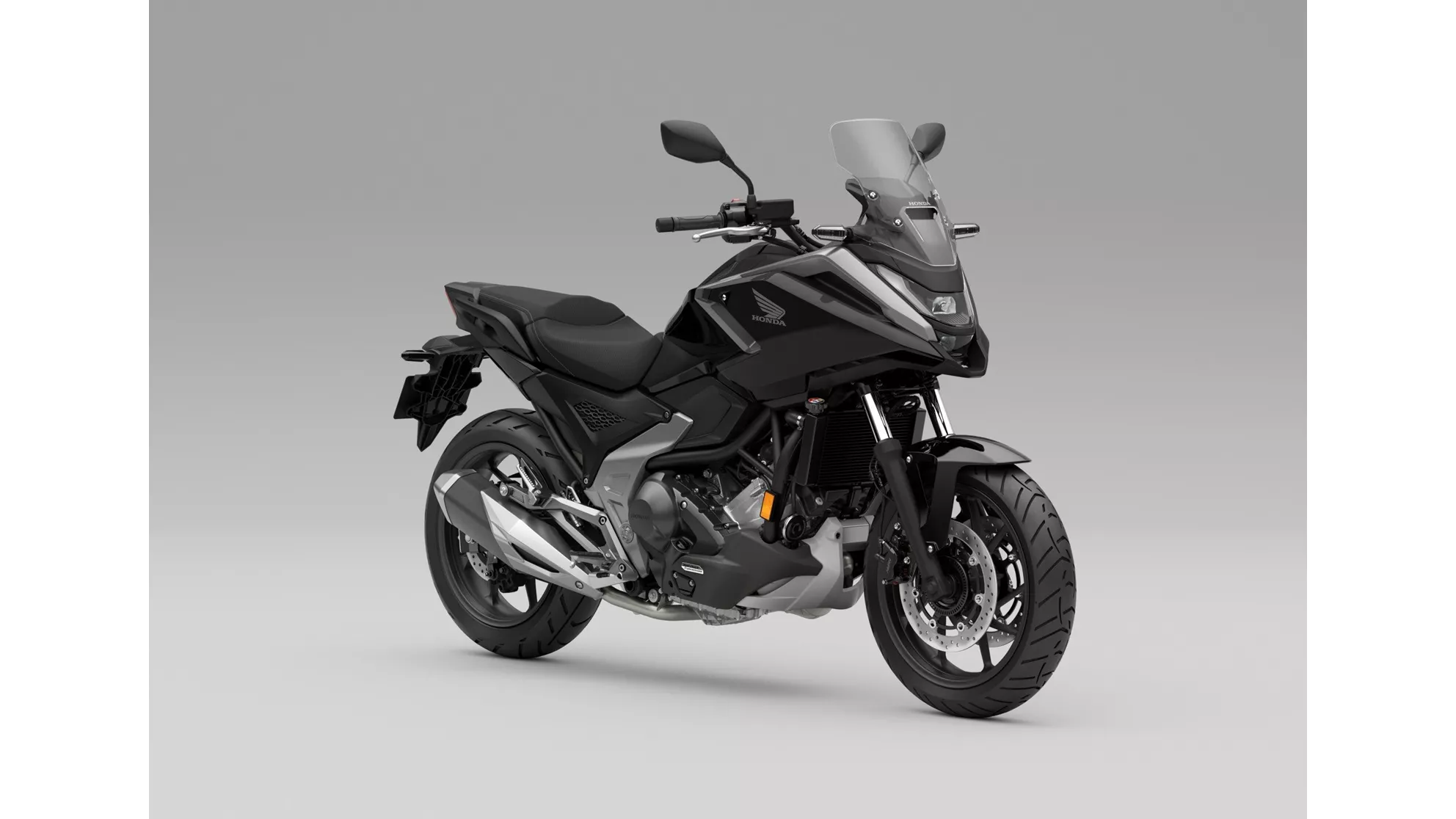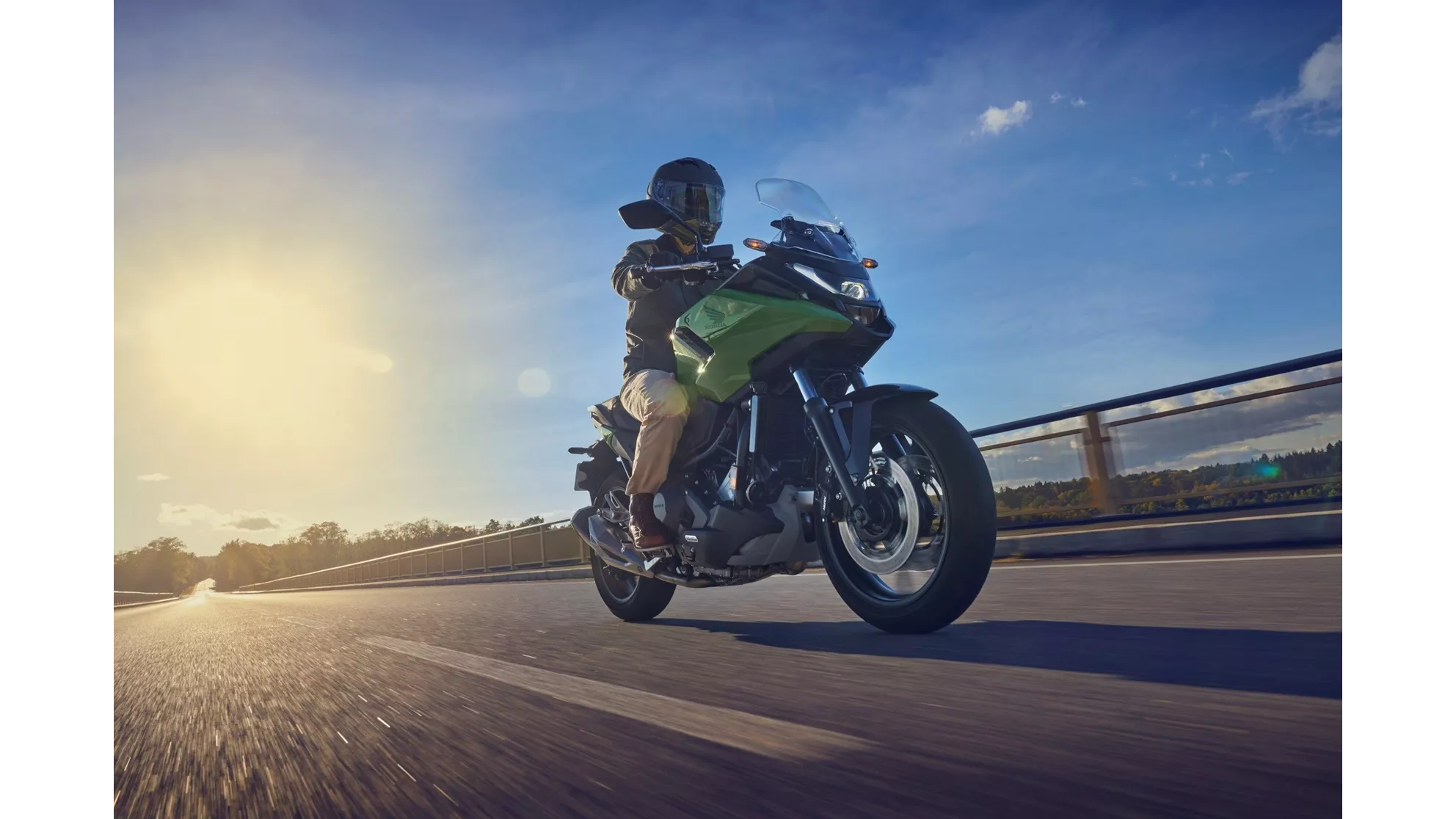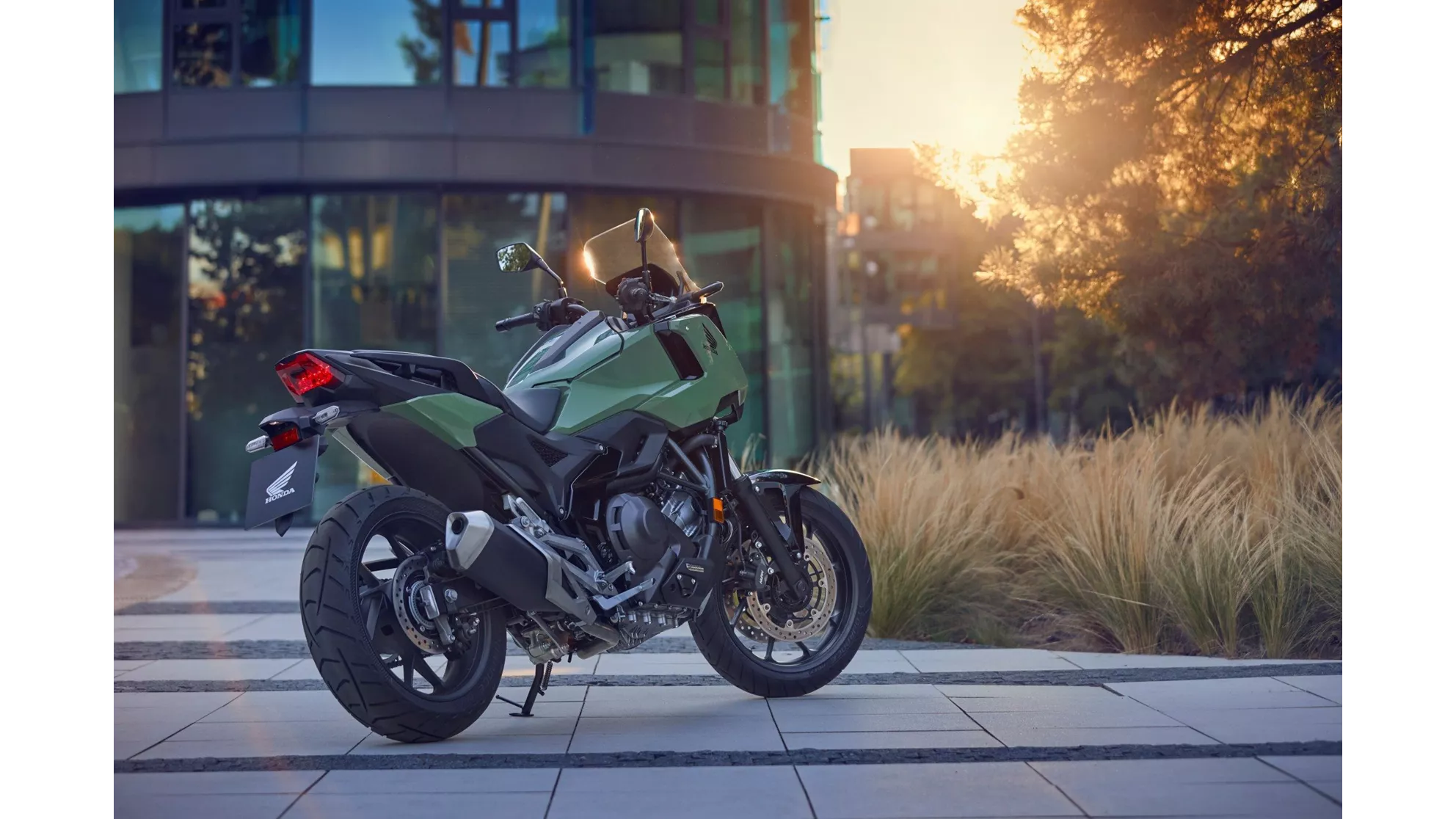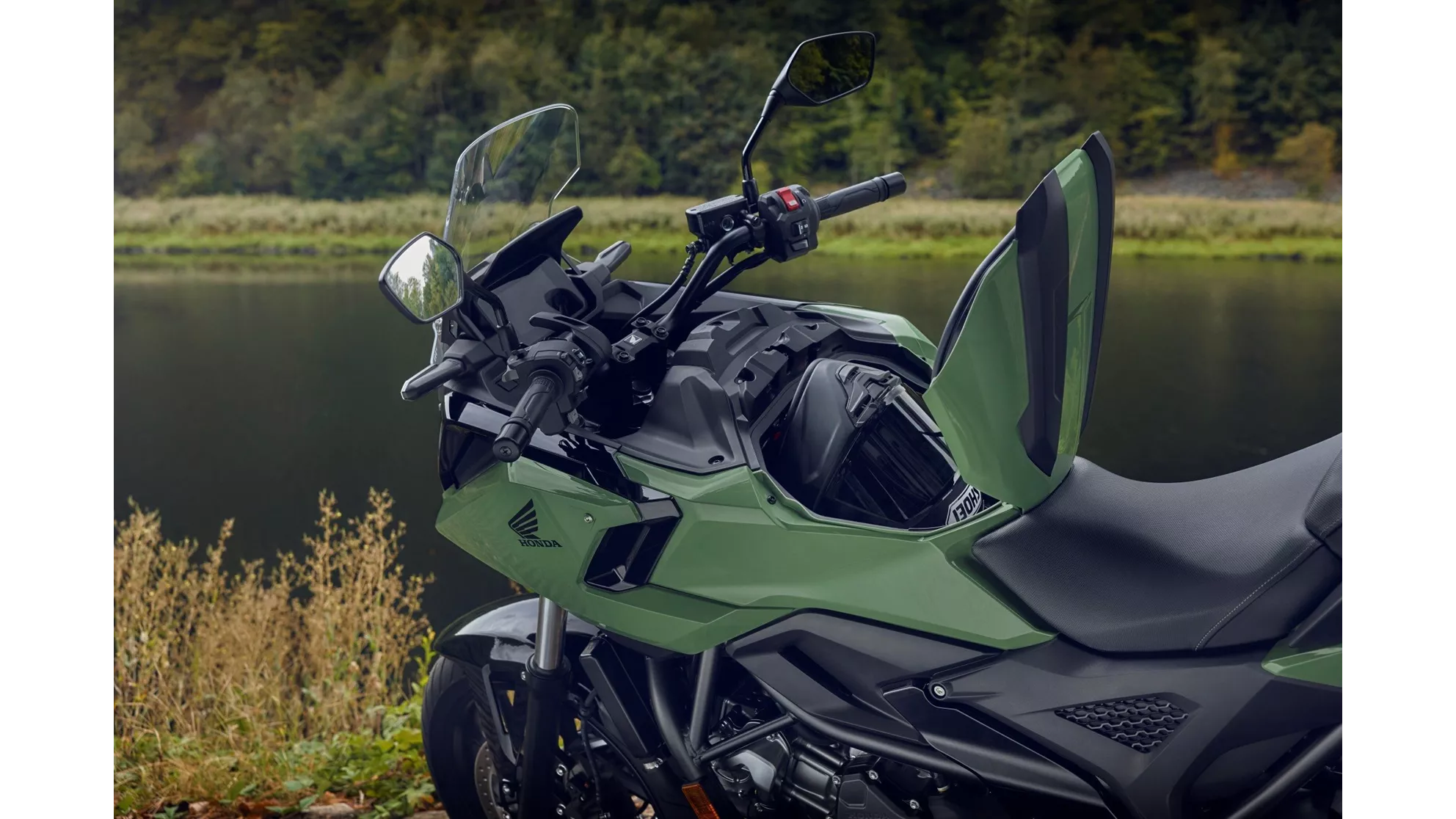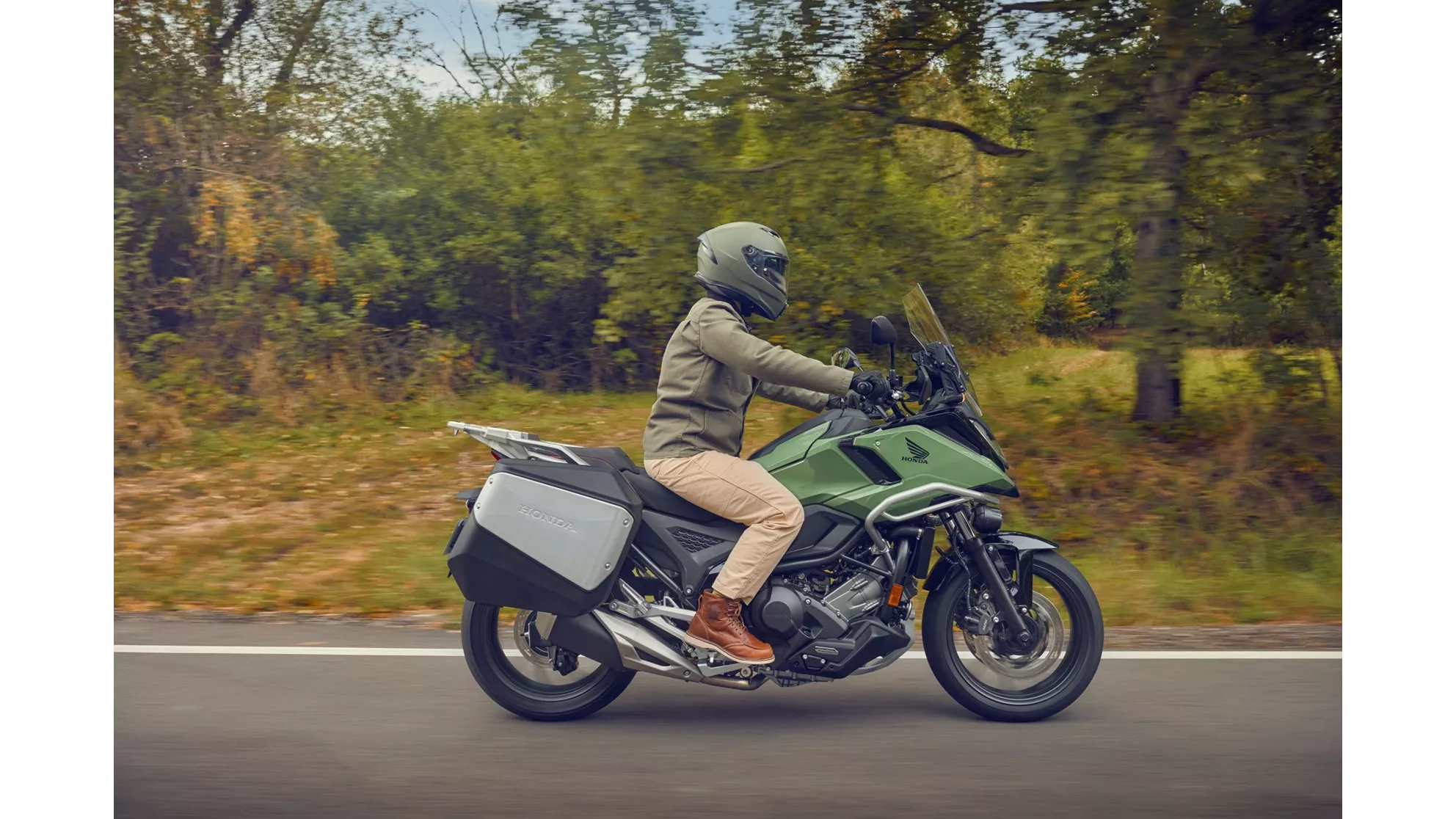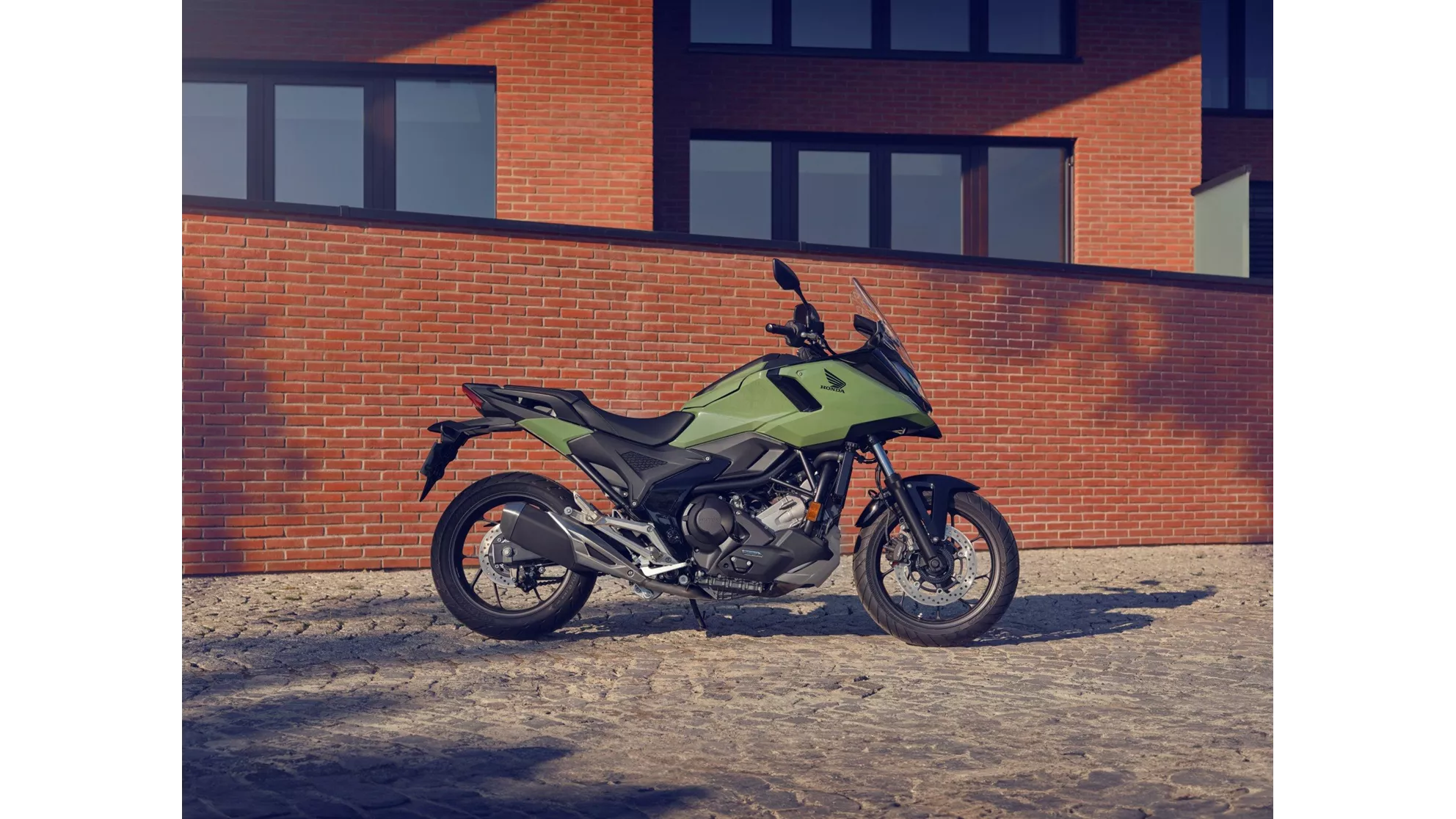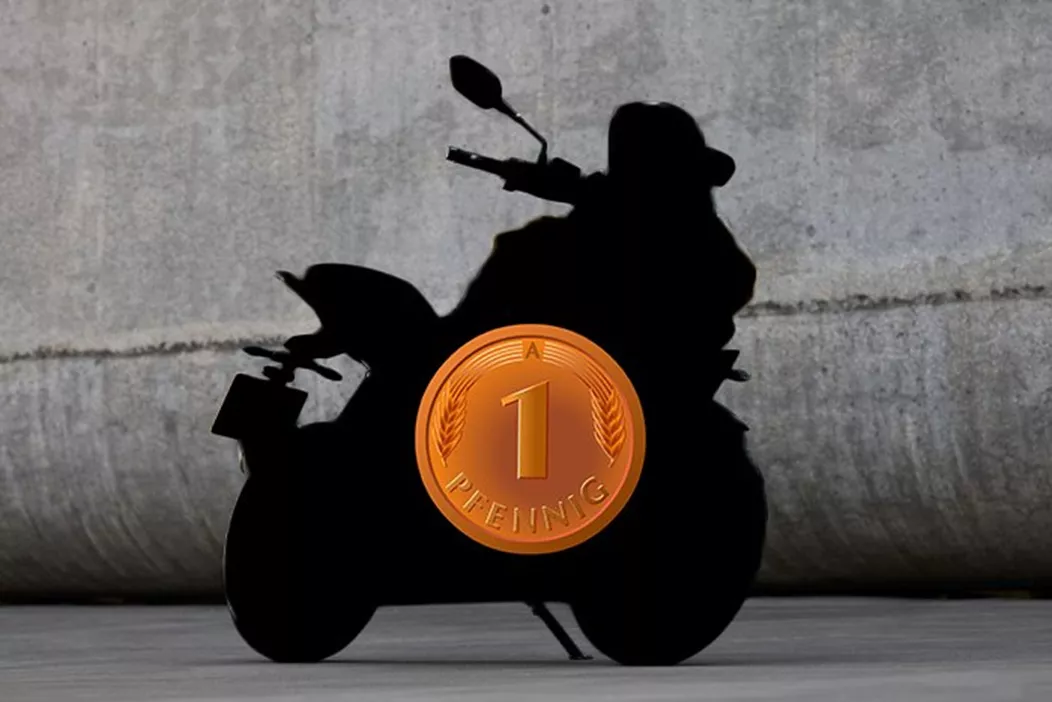It is by no means disrespectful to refer to the Honda NC750X as a bread and butter bike - how boring, yet above all unaffordable, would the motorcycle universe be if it only consisted of top-equipped premium models with all conceivable frills! It is truly refreshing to have bikes that fulfill such important cornerstones as accessibility, practical features, reliability, everyday usability, and low consumption. One of these bikes is the Honda NC750X, which has been around for so long that one can rightfully say it has made history. For 13 years now, the NC series has enriched Honda's lineup, with NC standing for New Concept - perhaps it should be renamed to PC750X, for Proven Concept. Because even though the naked bike NC700S or NC750S, the cruiser CTX700N, and the overly extravagant Batbike NM4 Vultus had to bow out after a few years, the NC750X remained steadfast in the lineup.
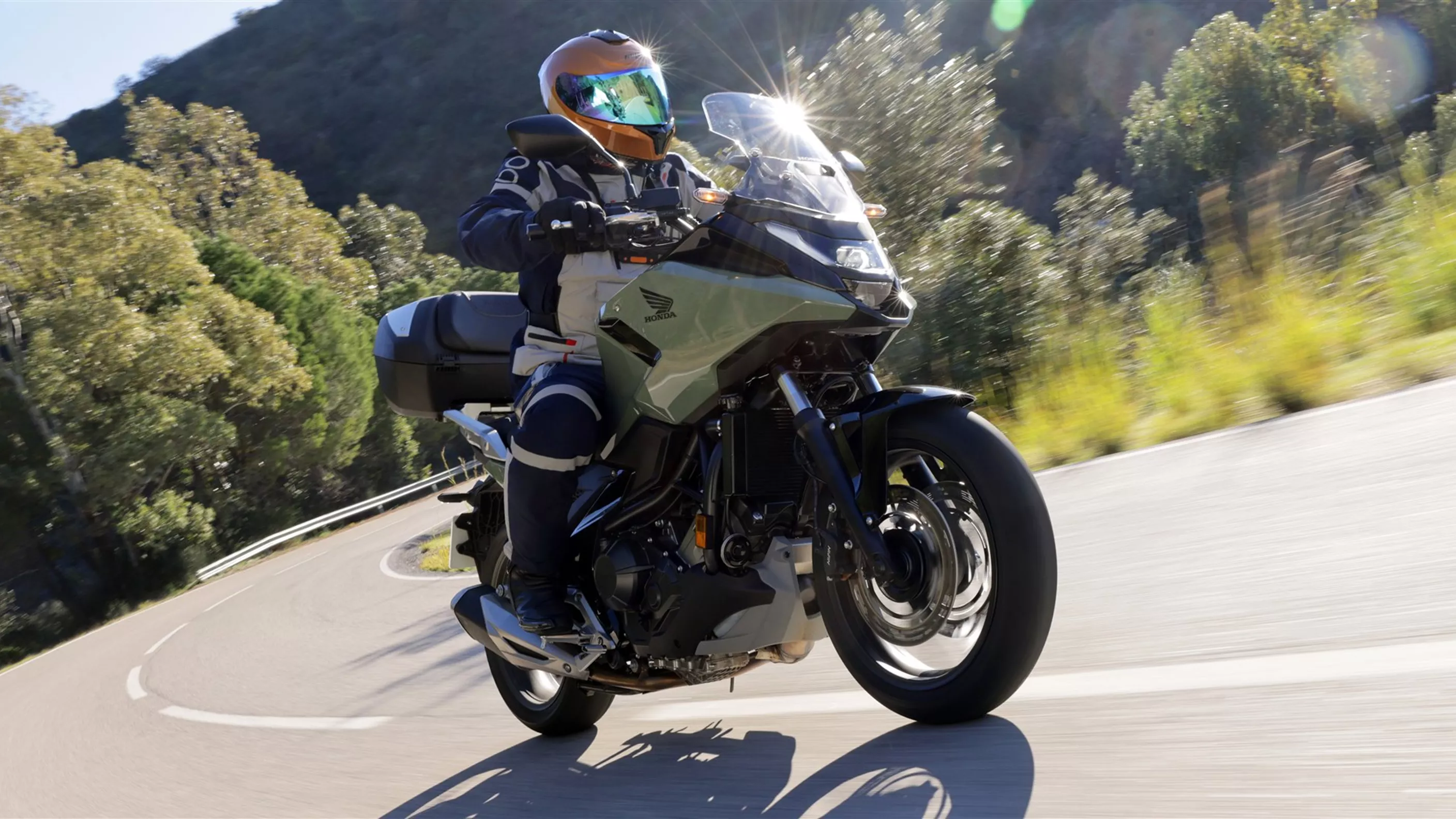
Honda NC750X 2025 Test - More Comfort AND Sport!
Premiere Test of the Revamped All-Rounder
You can certainly call the Honda NC750X a bread and butter bike, as practical and sensible values are indeed the top priority for this all-rounder. However, the NC750X is a lot more fun than some might expect - here is the test of the brand new 2025 NC750X!
&width=72&height=72&bgcolor=rgba_39_42_44_0&mode=crop)
vauli
published on 17/01/2025
The engine of the Honda NC750X impresses with grunt and composure.
And a lot has changed in the last decade, especially the engine of the NC750X has gained significantly over time. Not only in displacement (now it's 745 cc instead of the 670 cc in the NC700X), but also in power and torque. Currently, it delivers 58.6 hp at 6750 rpm, compliant with the stricter Euro5+ standard, and 69 Newton meters of torque at just 4750 rpm - making the engine primarily designed for strong low-end performance, but it has also noticeably gained in character and sportiness. Of course, not uninteresting for a beginner or stepping-up motorcycle is the option to get the NC750X also in a 48 hp version.
The unique DCT dual-clutch transmission on the Honda NC750X
A special highlight of the Honda NC750X is the option to order it with a dual-clutch transmission, which Honda calls DCT (Dual Clutch Transmission). And since it's not unlikely that someone interested in the new 2025 version of the NC750X has never heard of it, here's a brief explanation of the system: We know dual-clutch transmissions primarily from cars, where this system is offered as an available automatic version. So far, only Honda has taken the effort to shrink this system to motorcycle-friendly dimensions.
How long does such a DCT system last?
Compared to a standard clutch, the system is indeed quite complex, but in our experience, it is also very reliable. For instance, VaraHannes, who organizes rider safety training for and with us, has been riding his Africa Twin with DCT for hundreds of thousands of kilometers—and has yet to encounter any issues with the dual-clutch transmission. It is no longer a fixed, pre-programmed system that can't accommodate personal preferences—you have enough leeway to configure the system to your own liking, making it truly suitable for everyone.
What can be adjusted on Honda's DCT?
On the one hand, you can let the DCT work fully automatically: Since there is no clutch lever for the left hand and no gear lever for the left foot, you can let the NC750X handle everything itself in automatic mode - and it works really well! Thanks to the two clutches, a gear is always engaged, and the gear changes occur seamlessly without any interruption in power, making the process very smooth. However, you also have the option to select the timing of the gear shifts in four stages - in stage 1, which is linked to the Rain mode, the system shifts very early, making it fuel-efficient, quiet, and relaxed - perfect for cruising. Then there are two middle stages, linked with the Standard mode, and the 4th stage, linked with the Sport mode, extends the 6 gears further - but in a way that makes it sportier without being annoying, as the engine is not designed to be rev-happy.
Which level is now the best for the DCT?
For me personally, during the ambitious test rides on really twisty roads in Portugal, the sportiest setting fits perfectly—not because I'm so sporty, but because I like to push the limits even during normal rides and enjoy making full use of the rev range, no matter how wide it is. Honda hasn't changed the shift points in the various modes for 2025, but the throttle response from low revs has been made even smoother, resulting in a more harmonious operation. Additionally, there is the option to manually intervene with the DCT—two buttons on the left handlebar allow the rider to shift up or down as desired. So if the NC750X seems to linger too long in a gear, you can simply shift up. A perhaps even better practical example is when approaching a curve downhill—the system doesn't know a curve is coming, as there is no IMU with lean-angle-dependent or gyro sensors that also take the bike's inclination into account. But you can easily downshift from third to second gear before the curve with the push of a button, and then everything goes back to automatic. Interestingly, the DCT on the NC750X manages to choose the gears quite accurately based on speed, even without many sensors—intervention in the natural process is therefore rarely necessary.
The manual mode of the DCT makes little sense on the Honda NC750X.
There is even the option to choose a completely manual mode - but then you REALLY have to shift, as the system lets the engine hit the limiter in every gear without any mercy. However, one thing it won't do - if you come to a stop in 6th gear, the bike naturally won't stall, and the system will indeed shift to first gear, so you can take off again in first without burning out the clutch. Those who primarily choose this manual mode should actually save the extra cost for the DCT and opt for the conventionally clutch and gear lever-shifted NC750X, as during the test rides we were also able to try out the standard gearbox, and I can give this combination a good review. However, if the extra cost for the DCT is feasible, this unique option gets a clear recommendation from me.
Finally, the Honda NC750X gets better brakes!
The engine-transmission combo with the DCT works really well because it not only operates comfortably and extremely harmoniously, but can actually be moved sportily. And with that, I'm right at a novelty on the front of the 2025 model of the NC750X, which also has a very positive effect on sportiness - and I don't mean the new headlight, which of course also makes quite an impression and clearly distinguishes the new 2025 model from its predecessor. No, it's about the front braking system: For the first time in the history of the NC series, the NC750X gets a dual-disc brake. Instead of the 310 single disc, two dual-piston calipers now bite into two 296 mm discs, providing indeed more bite, more routine, and thus noticeably more sportiness! I do admit that the worst dual-disc system is probably worse than the best single-disc brake, but in the case of the NC750X, it really benefits the overall package.
Whoever improves their riding skills will certainly want better brakes.
Who says the NC750X has to be just for beginners? And even if a beginner picks it up, they'll naturally improve and eventually want to trail brake more sportily before a tight corner - and they can now do that more confidently and sportily. But before anyone gets the idea that the new NC750X has become a purebred sports bike, let me list a few things that clearly indicate the NC750X is primarily a practical and accessible bread and butter bike.
Comfortable and cozy - that's the new 2025 Honda NC750X.
The ergonomics are worth mentioning: you really sit comfortably on the NC750X. The seat gets a new, more slip-resistant cover but otherwise remains unchanged. Personally, I haven't had any issues on longer rides, though some NC-X owners believe it could be more comfortable. Well, there are indeed some more comfortable, but also more expensive, machines in Honda's lineup. For me, the ride in Portugal was too short to identify any comfort shortcomings. The suspension, which leans more towards the comfortable side, suits a touring bike and is still not too spongy.
The Honda NC750X may not be the lightest, but it's surprisingly nimble.
The handling can also be considered successful and quite agile, even though the version with DCT and a 90% filled 14.1-liter fuel tank weighs a respectable 226 kilos according to Honda—not exactly lightweight. With a manual transmission, you can save a proud 10 kilos, but I gladly load an additional 10 kilos (positioned low for optimal center of gravity) to enjoy a truly awesome DCT transmission. The handling becomes surprisingly playful, partly due to the wide handlebars, and the 17-inch tires, with a narrow 160 rear tire, certainly contribute to the genuinely easy riding performance. The new aluminum rims have also become a bit lighter, which at the front at best compensates for the additional disc—overall, the 2025 NC750X is definitely not an unwieldy machine.
Smaller riders will enjoy the Honda NC750X.
The seat height of just 802 mm is also fitting - even when I don't lower the bike with my weight, I have a secure stance with both feet. So, even smaller riders will find good support. The wind protection is certainly good enough for the NC750X - of course, not as great as on a Honda NT1100, but still very balanced, as the windshield takes the pressure off the chest and doesn't buffet the helmet unpleasantly. And in the original accessories, there is even a five-level height adjustment with a 7 cm taller windshield for just under 400 euros, as well as a comfort seat for both rider and pillion for 150 euros each.
Does the new Honda NC750X 2025 have enough electronics on board?
The electronics installed in the new Honda NC750X are straightforward yet certainly not lacking. As previously mentioned, there is no IMU installed, so there are no lean-angle-dependent features, and therefore only a 2-channel ABS and a conventional traction control, which is at least adjustable in three stages and can be turned off. However, the NC750X pampers with an impressive 4 riding modes - Rain, Standard, Sport, and a configurable User mode. Incidentally, the Rain mode has been revised for 2025. As a rider, you also look at a modern 5-inch color TFT display with connectivity, which can also display turn-by-turn navigation. Three themes are available for displaying all relevant data, and operation is now via a backlit four-way switch on the left handlebar.
The spacious storage compartment above the engine of the NC750X remains a hit!
One feature that won't surprise NC700X or NC750X enthusiasts, and perhaps lovers, is the helmet storage compartment above the engine. Although not new for 2025, it remains ingenious and very spacious for various items! However, as a designated helmet compartment, it's not universally usable; my Nolan N80.8 in size M, for instance, didn't fit by a few millimeters. In size S, it would have been no problem, and very round helmets from other manufacturers, as well as open-face helmets, fit in easily.
Is there anything the new Honda NC750X 2025 can't do?
Indeed, there is something the NC750X 2025 cannot do, which many might suspect due to its rugged appearance, the X in its name, and especially because Honda categorizes the NC750X as an adventure bike: off-road. With 120 mm of suspension travel at the front and rear, it can handle no more than a gravel road. This is certainly very good, as the seating position is very upright and the wide handlebars offer excellent control, but true off-roading is definitely not possible with the NC750X. For that, the Honda XL750 Transalp, also tested in Portugal, is better suited - after all, the Transalp 750 is also being updated for 2025!
A very reasonable price for the best Honda NC750X of all time.
When it comes to costs, a bread and butter bike clearly focuses more on the mundane money aspect than a super-exclusive luxury bike that spends its life in a hermetically sealed garage. Honda asks for a reasonable €8,590 for the standard NC750X in Austria and €9,590 for the DCT version—where the €1,000 extra is absolutely worth it. For €10,000, you get real value with many unique features that speak for the NC750X. We don't have the German prices yet, but they are likely around €1,000 less than the Austrian prices. In Switzerland, the NC750X costs 9,490 francs, and the DCT version is 10,690 francs, even 1,200 francs more—but in my opinion, still worth the extra cost in full!
- How much does a Honda NC750X DCT cost?
- Here you will find an overview of the price level of new and used motorbikes!
&width=60&height=60&bgcolor=rgba_39_42_44_0&mode=crop)
Honda NC750X DCT 2025 - Experiences and Expert Review
vauli
The Honda NC750X retains its talents in the 2025 model year, focusing on everyday usability, practical details, accessibility, and low fuel consumption. The unique DCT dual-clutch transmission is even better, thanks to a more harmonious setup. A new aspect is the sportiness, which the engine and transmission unit and agile handling with a low center of gravity already made possible, but now elevated to a new level with the new, more stable dual-disc brake at the front. Given its pronounced touring capability, it's no surprise that the NC750X sells so well, despite or perhaps precisely because of its 13-year existence. Those who can afford it should definitely invest in the DCT dual-clutch – it truly makes the NC750X unique!
More from 1000PS Magazine
Honda NC750X 2025 Test - More Comfort AND Sport! Images
Source: 1000PS















































































